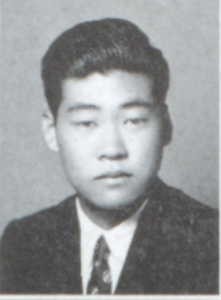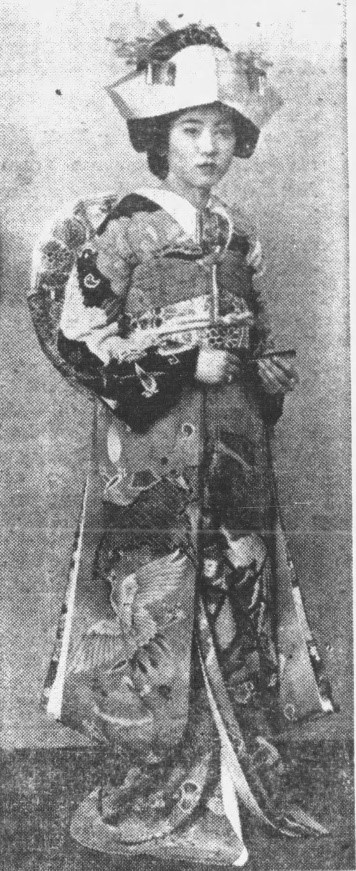
Mamoru Furuya
Sergeant
442nd Regimental Combat Team
3rd Battalion, M Company
Mamoru Furuya was born on June 4, 1922, in Kapaa, Kauai, Territory of Hawaii. He was one of nine children born to Masaru and Misayo (Hasegawa) Furuya. His siblings were Isamu, Frank Fumio, Charles Kiyoshi, Henry Hideo, Katherine H., Julia A., Else T. and Clarence T. Furuya.
Masaru emigrated from the town of Kanagawa, Fukuoka Prefecture, Japan, arriving at Honolulu on January 20, 1914, on the China Maru. Misayo was born in Hanalei, Kauai, to Iwakichi and Wai Hasegawa, who arrived in 1890 and 1896, respectively, from Fukuoka Prefecture, Japan. By 1940, Iwakichi was a widower living in Honolulu with his son Yoshio, a Lieutenant with the Honolulu Police Department.
Masaru worked for the Lihue Plantation Company in Hanamaulu. He married Misayo Hasegawa on July 8, 1919, at the Hongwanji Mission in Lihue. By 1930, the family lived at 2725 South King Street in Honolulu and Masaru was working as a house carpenter. By 1940, Masaru was employed as a carpenter by S. Tsutsumi Construction, 915 Hausten Street.
Mamoru graduated from McKinley High School in 1940. He registered for the draft on June 30, 1943, at Local Board No. 3 at the National Guard Armory, Honolulu. He was employed at Hawaiian Construction-Maryknoll School and worked at Fort Ruger. He was living with the family at 2725 Kahoaloha Lane; his point of contact was his uncle, Noburo Furuya of 2899 South King Street. Mamoru was 5’7” tall and weighed 130 pounds.
On March 24, 1943, Mamoru enlisted in the Army. He was sent to Boom Town, the tent city at Schofield Barracks where all the recent volunteers were housed. On March 28, they were given an aloha farewell ceremony by the community at Iolani Palace. On April 4, they left on the S.S. Lurline for San Francisco. After arriving on the mainland, Mamoru and the rest of the new soldiers were sent by train to Camp Shelby, Mississippi, for training, arriving on April 18. He was assigned to M Company, 3rd Battalion.
After a year of basic and specialized training and military exercises, they left by train for Camp Patrick Henry, Virginia, on April 22, 1944. On May 2, the 442nd left nearby Hampton Roads in a convoy of over 100 troop ships, and arrived at Naples, Italy, on May 28.
The battalion spent a week at a staging area in Bagnoli, near Naples, before leaving on LSTs for Anzio on June 6, where they marched five miles to a bivouac area. From Anzio, the 442nd went to a large bivouac area at Civitavecchia, north of Rome, where they went through additional training and final preparations for going to the front lines. After a week in a bivouac area in the nearby town of Bagnoli, they left on LSTs for Anzio. The 442nd entered combat on June 26 near Suvereto in the Rome-Arno Campaign.
Mamoru was present for all the action seen by the 442nd in Italy. They left for France on September 27.
Once they arrived in Marseilles, the Combat Team was in a bivouac area in nearby Septèmes until October 9, when they were transported north to participate in the Rhineland-Vosges Campaign. In October-November, the 442nd liberated the important road junction of Bruyères, followed by Biffontaine and the famous “Rescue of the Lost Battalion” – the 1st Battalion of the 141st (Texas) Infantry Regiment that had advanced beyond its support, become surrounded by the enemy, and was unable to extricate itself.
Following the Vosges, Mamoru went with the 442nd for participation in the Rhineland-Maritime Alps Campaign in Southern France. They were in the area of Nice, Menton, and Sospel beginning on November 21. The 442nd returned to Italy on March 25, 1945, for the Po Valley Campaign, leading to the end of the war in May.
After Germany surrendered on May 7, 1945, he remained in Italy for occupation duties.
For his wartime service, Sergeant Mamoru Furuya was awarded the Bronze Star Medal, Good Conduct Medal, American Campaign Medal; European-African-Middle Eastern Campaign Medal with four bronze stars, World War II Victory Medal, Army of Occupation Medal, Distinguished Unit Badge, and Combat Infantryman Badge. He was awarded the Congressional Gold Medal on October 5, 2010, along with the other veterans of the 100th/442nd Regimental Combat Team. This is the highest Congressional Civilian Medal.
Mamoru arrived back home on the USAT Aconcagua, that arrived with over 500 other returning soldiers in Honolulu Harbor at Pier 26 at 9:00 a.m. on December 17, 1945. Thousands of friends and family were awaiting them with lei and gifts. Their hopes of a dockside reunion were frustrated by the Army who barred them from the pier and hurried the men onto waiting buses. They were taken to the Army Separation Center at Fort Kamehameha for processing. The men were then allowed to go home and return at a later date for discharge.

He married Edith Momoyo Kishii, daughter of Mr. and Mrs. Bunji Kishii, on March 15, 1952, at the Nuuanu Congregational Church in Honolulu. His friends said about their marriage that it “was the greatest gift he ever received.” They raised two boys.
Left: Edith in her silk brocade traditional wedding kimono
Furuya was an active member of the 442nd Veterans Club, serving as Secretary and Treasurer of M Company Chapter in the 1950s. He was a General Contractor. In 1964, homes he built in Waialae Iki Ridge were featured in the Honolulu Home Builders Association Parade of Homes. In 1971, he served as President of the Oahu Contractors Association.
Mamoru Furuya died on October 8, 1996, in Honolulu. He was survived by his wife, two sons, and two grandchildren. He was interred in Hawaiian Memorial Park in Kaneohe, Oahu, Hawaii. His wife died on March 25, 2021.
Mamoru’s brother Isamu Furuya served as a Private First Class, Headquarters Company, 3rd Battalion.
Researched and written by the Sons & Daughters of the 442nd Regimental Combat Team in 2022.
